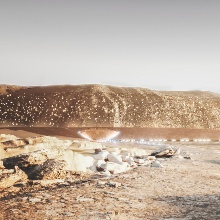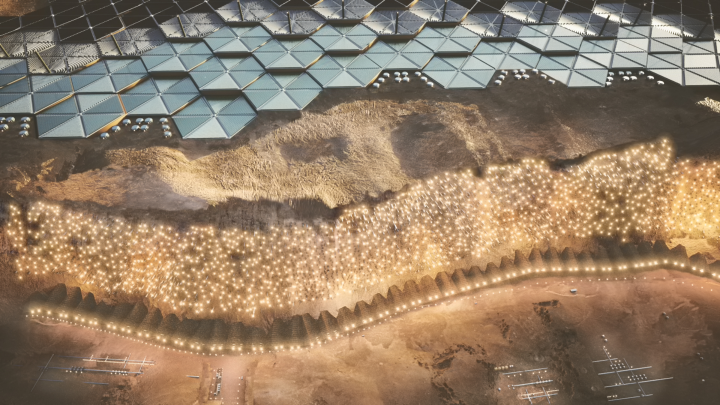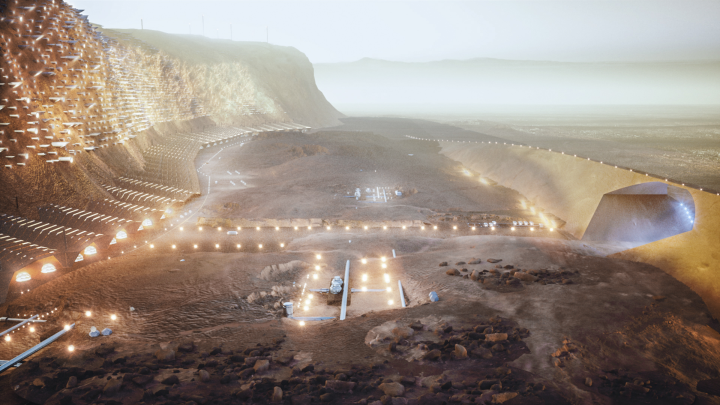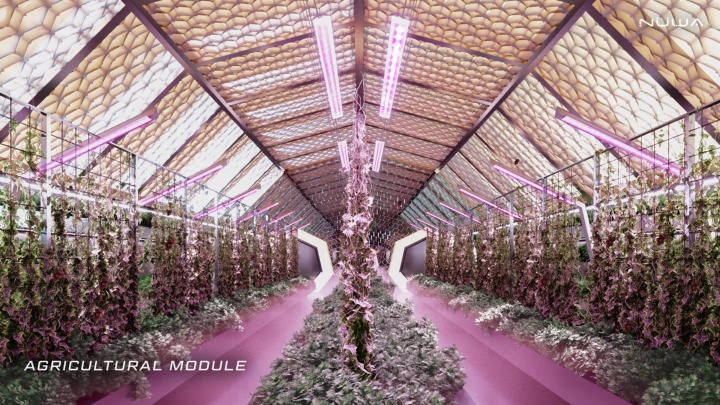Martians have kept scientists busy since the 19th century. How people can actually survive in space is being investigated by the team of experts at “SONet” (Sustainable Offworld Network), including Dr. Gisela Detrell from the Institute of Space Systems of the University of Stuttgart. The Life Support System designed for the city of “Nüwa” should provide for the one Million inhabitants on Mars. The concept was created as part of the Mars Society City State competition and was presented last October in the Mars Society convention.
Nüwa, named after a mother goddess of Chinese mythology and located on the southern edge of the Tempe Mensa, is part of a network of five cities on Mars, which offers citizens long-term easy access to resources and allows mobility. The project proposes not only feasible urban planning, but also a socio-economic development plan, as well as descriptions of industry, infrastructure, generation and distribution of energy and services. “There are many scientific and technical differences between the development of a space station for six astronauts in a Low Earth Orbit, like the ISS, and a city for a million people on the distant planet Mars. In particular, the necessity of building a society on Mars”, explains Dr. Gisela Detrell.
Sustainability is a must
The concept study envisions a city that is not only sustainable, but can also expand and grow without relying on Earth’s support. To make it possible, it is necessary to estimate how many physical resources and energy per capita have to be collected, converted and integrated into the city from the Martian environment. Due to recurring dependencies, this must be done gradually: For example, energy production such as solar panels requires components, materials and other means to extract them. This in turn requires machines that also require materials and energy. To be independent from Earth resources, substitute materials on Mars and energy sources have to be found, which influences the choice of the location for the future city.
Protection in the Martian cliffs
The conceived cities are built into the walls of a rocky Martian cliff, which offers protection from pressure, temperature fluctuations and harmful cosmic rays from space. However, humans are not made to live underground. Therefore, openings to the valley provide natural lighting within the inhabited areas. Production, industry, food and power generation must be either at the bottom (valley) or at the top of the cliff (mesa). Instead of neighborhoods, the city consists of blocks hosting habitation, workplaces, local services and public and green spaces for around 4,000 people each. Each block is composed by numerous interconnected cylinders that extend from the illuminated outside to about 150 m into the rock.
The Life support System as a key element
The life Support System is a key element, since it has to provide everything humans need to survive, self-sufficient and independent from Earth. The main food source in Nüwa can be found on the agricultural modules, where plants and microalgae are cultivated. To ensure a balanced diet, insects and cell meat are supplemented. For psychological reasons but also to add some buffer in the system, we might also have a few animals in Nüwa.
Plants and algae also ensure that the air is recycled: They use the carbon dioxide produced by humans to produce oxygen through photosynthesis. For this process, plants, like on Earth, need light, which has to be artificially generated on Mars, since the red planet is further away from the Sun. To be energy efficient, blue and red LED wavelengths are used. However, these LEDs require 37 kW of power per person, large cultivation areas, a lot of water and also nutrients, oxygen and nitrogen.
There are still many topics to explore before a future city on Mars can become a reality. But the project shows that a sustainable city is possible - not only on Mars, but also here on Earth.
Expert Contact:
Dr. Gisela Detrell, University of Stuttgart, Institute of Space Systems (IRS), Phone +49 711 685-69611, E-Mail.





